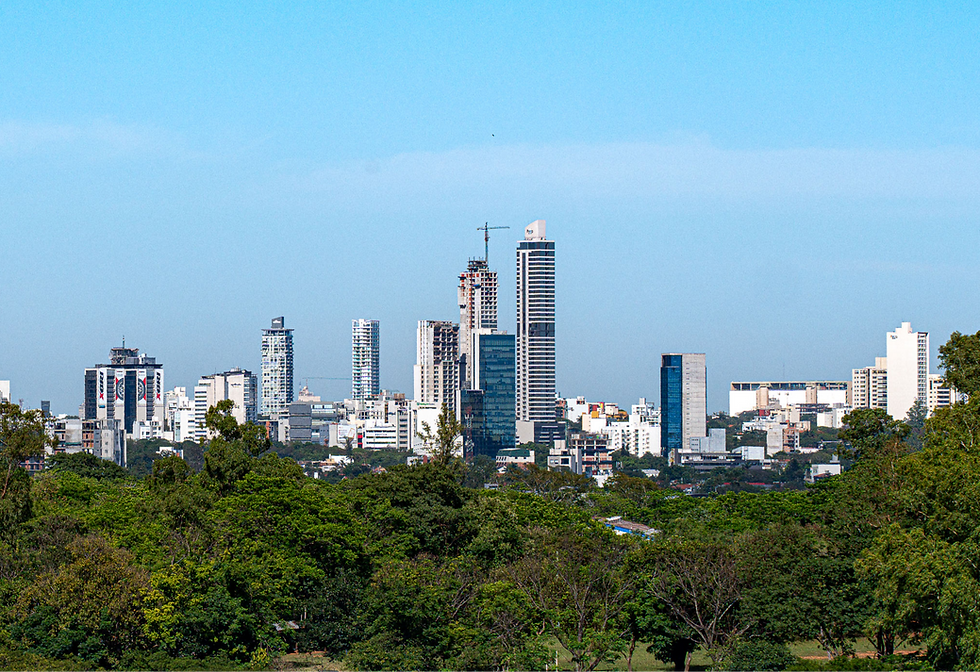Mining Regulation in Paraguay: Legal Keys for Developers and Real Estate Agents
- Carlos E. Gimenez

- Apr 30
- 4 min read
Updated: May 6
In Paraguay, the subsoil and mineral resources do not belong to surface owners, but to the State. This principle, established in Law No. 3180/2007 "On Mining and Metallurgy" and subsequently amended by Laws 4269/2011 and 4935/2013, lays the foundation for a legal framework that regulates all mineral prospecting, exploration, and exploitation activities in the national territory.

For the real estate sector, understanding this legal framework is fundamental. The existence of existing mining rights on a property can limit urban development, affect land appreciation, or, conversely, open up opportunities for complementary economic development in certain areas.
Paraguay has significant mining potential, supported by geological studies, although much of the territory has yet to be fully explored. This opens up opportunities for new discoveries and developments. Companies are currently analyzing the economic viability of what has already been identified. Gold and iron ore are already being extracted in Paraguay, and lithium, copper, titanium dioxide, and uranium are in the prospecting or exploration stages. However, Paraguayan mining is still in its infancy, with significant room for development.
Article 3 of Law 3180 establishes that all mineral resources are the exclusive domain of the Paraguayan State. This includes metallic and non-metallic minerals, with the exception of stone, earth, and calcareous substances used for construction, which, while not subject to concession, require authorization, supervision, and control by the Ministry of Public Works and Communications (MOPC).
This means that a landowner cannot freely exploit sand, stone, or clay without going through defined administrative processes. More importantly, if a third party already has a prospecting or exploitation permit for that property, the landowner cannot object without justified reason.
The Paraguayan mining regime distinguishes three stages of activity:
Prospecting: A general search for mineral deposits. Lasts up to 1 year.
Exploration: Detailed investigation to define the technical and economic viability of a deposit. It lasts up to two years.
Exploitation: Commercial extraction of the resource. Lasts up to 20 years, extendable in 5-year periods.
Each phase requires authorization from the Ministry of Public Works (MOPC), and an annual fee per hectare is paid, the amount of which varies depending on the stage. For example, for prospecting, the fee ranges from USD 0.35 to USD 0.55/ha/year, while for exploitation, it can reach USD 2.25/ha/year.
A particular feature of the legislation is that substances used for construction (stone, sand, clay, limestone) are subject to special regulations. While mining concessions are not granted for these materials, their extraction must be authorized and regulated by the Ministry of Public Works and Transport, especially when it is on a commercial scale.
This directly affects real estate developers, construction companies, and urban development projects, as they cannot excavate, extract, or stockpile materials without the proper permit. Failure to comply can result in fines and suspension of construction work.
When the holder of the mining right is not the same as the landowner, the law establishes mechanisms to coordinate surface use. If there is no agreement, the MOPC can authorize mining easements (right of way, water use, facilities) or even initiate an expropriation process.
To avoid legal conflicts and ensure the viability of a real estate project, it is essential that developers consult the mining cadastre before acquiring land, especially in rural or peri-urban areas. The Vice Ministry of Mines and Energy, under the Ministry of Public Works and Mines (MOPC), maintains an online Mining Cadastre available on its website, where concessions, permits, applications, and those currently "in administrative or judicial process" can be viewed.
During the prospecting and exploration phase, mining rights holders enjoy exemption from national taxes (except for royalties) and can import machinery duty-free. This has helped attract international investors, especially in regions such as the Cordillera, Caaguazú, and the Chaco.
The law also provides a simplified regime for Paraguayan citizens wishing to exploit areas smaller than 10 hectares. This provision is important in areas where extractive activities coexist with small rural communities.
All mining activities must comply with national environmental legislation. The Ministry of Public Works (MOPC), in coordination with the Ministry of Environment and Natural Resources (MADES), may require environmental impact studies and mitigation and restoration plans, and is empowered to impose sanctions and revoke permits if serious non-compliance is detected.
For the real estate sector, these laws have clear implications:
Before purchasing land, it is advisable to check whether there are any active mining rights on it.
If materials (earth, stone, sand) need to be extracted for construction, the corresponding permit must be obtained from the MOPC.
In areas with high mining potential, land may have additional value not only due to its location but also due to its geological content.
Overlapping rights (real estate and mining) can generate conflicts that must be resolved in administrative or judicial proceedings.
In a context of urban growth and sustained demand for infrastructure, the link between real estate development and the mining regime is becoming increasingly important. Understanding these regulations allows investors, architects, and real estate agents to make informed decisions, anticipate legal risks, and discover new business opportunities in Paraguay.


